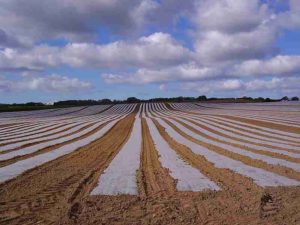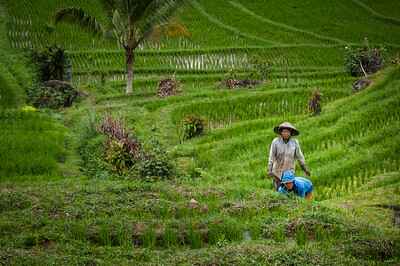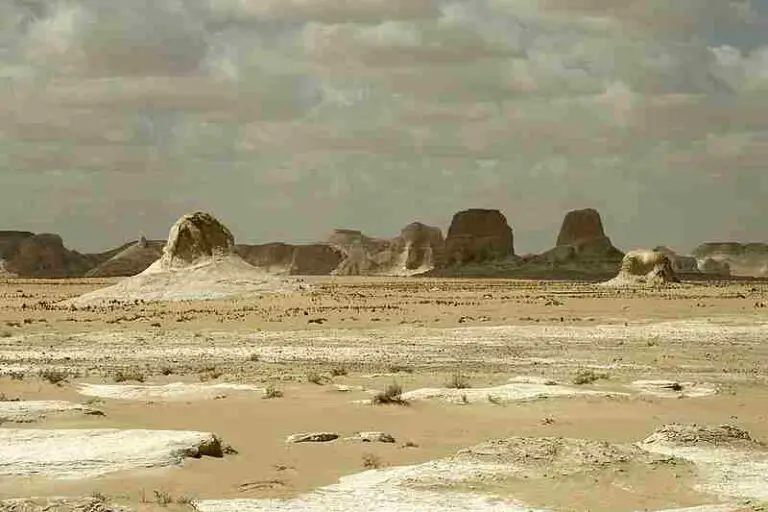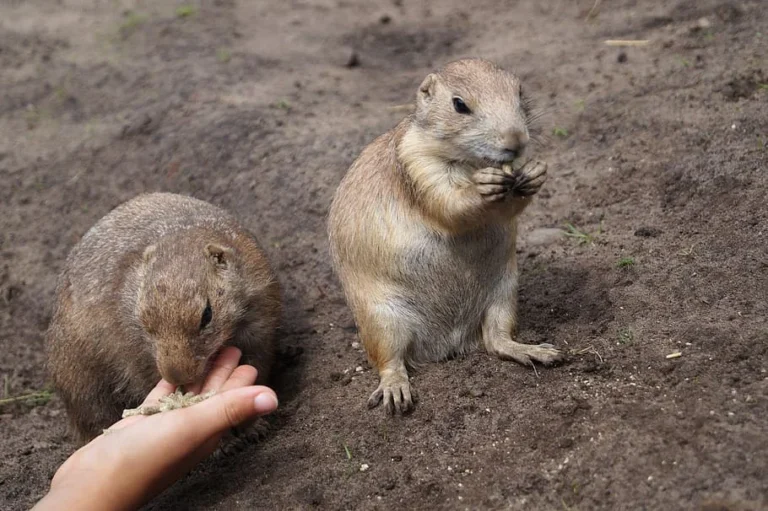15 Advantages and Disadvantages of Soil Conservation Explained
Advantages and disadvantages of soil conservation are; erosion control, carbon sequestration, infiltration, moisture retention, nutrient conservation, energy conservation, lower greenhouse emissions, high productivity, improved physicochemical properties, biological equilibrium (advantages); manual labor demand, time consumption, pesticide and herbicide overuse, uneven nutrient distribution, and technical challenges (disadvantages).
This article discusses the advantages and disadvantages of soil conservation, as outlined below;
-Advantages of Soil Conservation
-Disadvantages of Soil Conservation
-Advantages of Soil Conservation
1). Soil Conservation helps to Address Erosion
A major advantage of soil conservation is the control and mitigation of soil erosion.
Various soil conservation techniques such as no-till, strip cropping and crop rotation, reduce erosion by maintaining and improving soil resilience and overall quality.
For example, no-till farming ensures that the structural configuration of soil is undisturbed. This minimizes loose and weak areas that can make the soil more vulnerable to erosion [1].
As a result, the soil becomes more resistant to disruptive phenomena that can have negative effects on it.
Other soil conservation techniques like mulching and cover cropping, protect the soil by covering its surface [3]. This is especially useful in regions where climate change, natural hazards and extreme weather events like heat waves are prevalent.
2). Increases Carbon Sequestration Capacity
Carbon sequestration is a process which is essential as part of measures to meet the sustainable development goals.
The mechanism of carbon sequestration can be artificially driven, in the form of mechanized carbon capture and storage. It basically involves collecting and storing atmospheric carbon (CO2), in the subsurface of the Earth [5].
Several soil conservation techniques are helpful for carbon sequestration. In general, carbon sequestration can only be said to be successful, when the volume of carbon stored in the soil, exceeds the volume of carbon which is released into the atmosphere through processes like biodegradation [4].
No-till farming is an example of a soil conservation technique which is useful for carbon sequestration [6]. Because the soil is not tilled or loosened in this type of farming, trapped carbon is less likely to escape into the atmosphere.
Through carbon sequestration, the effects of deforestation and other forms of environmental degradation are reversed. This means that soil conservation is itself an environmental remediation technique.
3). Soil Conservation Improves Infiltration and Moisture Retention
In addition to erosion, another problem which is addressed effectively by soil conservation is moisture loss through evaporation.
In regions prone to high-temperature and low-humidity conditions, evaporation is one of the reasons behind the degradation of soil quality [9]. Low moisture content reduces the productivity of soil because water acts as a carrier of minerals needed by plants, and is a major requirement for the ecological and chemical equilibrium of the soil ecosystem.
Soil conservation techniques which improve the moisture retention capacity of soil include mulching and deep tillage [8].

4). Soil Conservation Preserves Soil Nutrients by Reducing Leaching
Leaching occurs when nutrients in soil are transported away from their original position in the soil, by percolation [7].
Although percolation and infiltration are basically good for the soil, when these processes occur in a pronounced manner, it is called leaching, which is harmful to soil health and quality.
There are various ways by which soil conservation mitigates leaching. Biological soil conservation techniques like strip cropping and cover cropping, protect the surface of the soil, limiting the dynamics of runoff and infiltration.
Physical soil conservation methods like terracing, control downslope leaching by slowing down the flow rate of water down the slope. Crop rotation and no-till farming, increase soil resistance to excessive infiltration and percolation.
5). Labor and Energy are Minimized
When soil conservation practices are integrated into agriculture, the cost of food production is usually decreased, in terms of labor and energy.
An example of a soil conservation technique that minimizes labor and energy is no-tillage farming. Compared to conventional farming methods, this approach increases energy efficiency and productivity of agriculture [11].
Because the soil is not disturbed in no-till farming, manual or mechanized ploughing are not used. This saves significant cost as well.
Other methods like contour farming, also reduce the need for labor and energy.
6). Less Greenhouse Emissions
Soil conservation reduces greenhouse emissions and mitigates climate change in various ways.
One obvious way is by reducing the demand for energy and the use of fossil fuels. Because many soil conservation techniques in agriculture involve minimal manual and mechanized labor, the burning of fossil fuels to produce energy is minimized, and at the same time, therefore, the emission of gaseous effluents that may degrade air quality, or cause ozone layer depletion and global warming.
Soil conservation also reduces atmospheric emissions by improving carbon sequestration [10]. Given that carbon dioxide (CO2) is one of the dominant greenhouse gases in the atmosphere, when carbon sequestration is enhanced through soil conservation, it has significant positive effects on the environment.
The practice of soil conservation also improves overall soil health, so that processes like nitrogen fixation become more efficient and effective. This reduces the concentration of nitrous oxide, another greenhouse gas, in the atmosphere.
7). Soil Conservation leads to Higher Crop Yield
Soil conservation correlates with higher crop yield in various climatic and topographic regions [2].
The reason for this is the fact that soil conservation improves soil quality by reducing pollutant concentrations, optimizing structure, chemical equilibrium and ecological stability, thereby enabling the soil to perform better in supporting plant growth.
By improving crop yield and productivity, soil conservation is beneficial to the agricultural and economic sectors.

8). Improves Soil Physicochemical Properties
Soil conservation techniques can improve the physicochemical characteristics of soil.
This is mainly because many of these techniques do not disturb the soil structure. No-till farming and dry farming, for example, do not significantly alter the soil structure.
In the absence of tillage, there is minimal compaction of the soil. This reduces the risk of erosion, saltwater intrusion and other soil problems.
A resilient soil structure also reduces the prospect of pollution by infiltration, of both soil and water resources.
9). Improves Soil Biological Equilibrium
Biodiversity in the soil ecosystem is affected positively by soil conservation.
Basically, soil biodiversity includes the micro and macro-organisms that live in or on the soil, like bacteria, fungi, insects, earthworms and plants [12].
Because soil conservation leads to improved physicochemical properties of the soil, these organisms are usually affected in a positive manner.
For example, increased aeration and structural stability as a result of no-till farming, can enable soil organisms to thrive, function effectively and reproduce. This will in turn lead to improved biodegradation and nutrient supply, which will enhance plant productivity.
10). Soil Conservation Reduces the need for Irrigation
One of the outcomes of soil conservation is moisture conservation.
This phenomenon increases the water retention capacity of soil and reduces the rate of moisture loss by evaporation.
Resultantly, the need for irrigation is reduced with soil conservation practices. This has economic benefits, considering that water is itself a natural resource and irrigation systems depend on energy.
-Disadvantages of Soil Conservation
1). Soil Conservation Requires Manual Labor and Equipment
Although many soil conservation techniques require minimal labor and energy, they also tend to be significantly manual.
This is a disadvantage, especially in large-scale projects where mechanized methods could be helpful. Techniques like terracing and strip farming can only be effective if a significant aspect of the process is carried out manually.
In addition, soil conservation techniques require equipment, such as the inorganic polymers used for mulching. Purchasing these equipment, and acquiring manual labor, add to the complexity and cost of soil conservation practice.

2). Soil Conservation Techniques may be Time-Consuming
Generally, when agriculture is conducted along with soil conservation, it tends to be time-consuming.
Soil conservation techniques often involve elaborate measures to control the biological and physicochemical conditions within a given area. Such measures include building terraces and windbreaks, as well as crop rotation.
This can pose a problem especially in small-scale settings, where there is need to carry out continuous, successive production.
3). Overuse of Pesticides and Herbicides
The aim of soil conservation is to enrich the soil, while minimizing external disturbance of all forms.
To achieve this, soil conservation techniques often avoid tilling and other forms of contact with the soil.
While this has advantages, it can create difficulties of weed control. Since the soil is not being tilled, physical removal of weeds may be completely replaced by the use of herbicides. This can endanger the soil, groundwater and the entire ecosystem.
In association with weed growth, pests may also become a problem. The risks associated with herbicide usage, may also occur where pesticides are used as a sole means of pest control.
4). Uneven Distribution of Nutrients
When tilling or churning of soil is avoided (as is mostly the case in soil conservation), nutrients in the soil are not evenly distributed.
This is a problem especially for nutrients with low mobility, like phosphorus and magnesium. In severe cases, it can affect the fertility and productivity of the soil.
5). Soil Conservation may pose Technical Challenges
Soil conservation methods require some form of learning, and technical knowledge, to be effective.
This is a barrier to the widespread practice of soil conservation, as it limits the capacity of many individuals to participate.
The technical nature of soil conservation also increases the likelihood of problems arising, such as the formation of gullies and rills as a result of limited runoff area. Such a scenario is possible within the context of techniques like mulching and strip cropping, where runoff is restricted and forced to concentrate in small areas.
Conclusion
The advantages of soil conservation are;
- Soil Conservation helps to Address Erosion
- Increases Carbon Sequestration Capacity
- Soil Conservation Improves Infiltration and Moisture Retention
- Soil Conservation Preserves Soil Nutrients by Reducing Leaching
- Labor and Energy are Minimized
- Less Greenhouse Emissions
- Soil Conservation leads to Higher Crop Yield
- Improves Soil Physicochemical Properties
- Improves Soil Biological Equilibrium
- Soil Conservation Reduces the need for Irrigation
Disadvantages of soil conservation are;
- Soil Conservation Requires Manual Labor and Equipment
- Soil Conservation Techniques may be Time-Consuming
- Overuse of Pesticides and Herbicides
- Uneven Distribution of Nutrients
- Soil Conservation may pose Technical Challenges
References
1). Balasubramanian, A. (2017). “Soil Erosion- Causes and Effects.” Available at: https://doi.org/10.13140/RG.2.2.26247.39841. (Accessed 19 May 2022).
2). Berresaw, M. K.; Pender, J.; Yesuf, M. M.; Kohlin, G.; Bluffstone, R.; Mulugeta, E. (2007). “Impact of soil conservation on crop production in the Northern Ethiopian Highlands.” Available at: https://www.researchgate.net/publication/5056662_Impact_of_soil_conservation_on_crop_production_in_the_Northern_Ethiopian_Highlands.(Accessed 18 May 2022).
3). Calegari, A.; Tiecher, T.; Wutke, E. B.; Canalli, L. B.; Bunch, R.; dos Santos, D. R. (2020). “The role and management of soil mulch and cover crops in Conservation Agriculture systems.” Advances in Conservation Agriculture Volume 1 (pp.179-248). Available at: https://doi.org/10.19103/AS.2019.0048.05. (Accessed 19 May 2022).
4). Chatterjee, S., Ghosh, S., Pal, P., 2020, ‘Soil Carbon Restoration through Conservation Agriculture’, in E. R. Rhodes, H. Naser (eds.), Natural Resources Management and Biological Sciences, IntechOpen, London. Available at: https://doi.org/10.5772/intechopen.93006. (Accessed 18 May 2022).
5). Hellevang, H. (2015). “Carbon capture and storage (CCS).” Available at: https://doi.org/10.1007/978-3-642-34132-8_24. (Accessed 19 May 2022).
6). Hussain, S.; Hussain, S.; Guo, R.; Sarwar, M.; Ren, X.; Krstic, D.; Aslam, Z.; Zulifgar, U.; Rauf. A.; Hang, C.; El-Esawi, M. A. (2021). “Carbon Sequestration to Avoid Soil Degradation: A Review on the Role of Conservation Tillage.” Plants 2021, 10(10), 2001. Available at: https://doi.org/10.3390/plants10102001. (Accessed 19 May 2022).
7). Katoh, M.; Murase, J.; Havashi, M.; Kimura, M. (2004). “Nutrient leaching from the plow layer by water percolation and accumulation in the subsoil in an irrigated paddy field.” Soil Science and Plant Nutrition 50(5):721-729. Available at: https://doi.org/10.1080/00380768.2004.10408528. (Accessed 19 May 2022).
8). Kumar, P. S. M.; Sairam, M.; Maitra, S.; Praharai, S. (2021). “Soil Moisture Conservation Techniques for Dry land and Rainfed Agriculture.” Available at: https://www.researchgate.net/publication/357429224_Soil_Moisture_Conservation_Techniques_for_Dry_land_and_Rainfed_Agriculture. (Accessed 18 May 2022).
9). Qian, J.; Prasad, B.; Miao, S.; Fu, D.; Zhou, T. (2022). “Impact of Environmental Factors and System Structure on Bioretention Evaporation Efficiency.” Sustainability 14(3):1286. Available at: https://doi.org/10.3390/su14031286. (Accessed 19 May 2022).
10). Srivastava, P.; Kumar, A.; Behera, S. K.; Sharma, Y. K.; Singh, N. (2012). “Soil carbon sequestration: An innovative strategy for reducing atmospheric Carbon Dioxide concentration.” Biodiversity and Conservation 21(5). Available at: https://doi.org/10.1007/s10531-012-0229-y. (Accessed 19 May 2022).
11). Teodor, R. (2014). “Energy efficiency and soil conservation in conventional, minimum tillage and no-tillage.” International Soil and Water Conservation Research 21(4). Available at: https://doi.org/10.1016/S2095-6339(15)30057-5. (Accessed 18 May 2022).
12). Woodman, J. D.; Baker, G. H.; Evans, T. A.; Colloff, M.; Andersen, A. N. (2008). “Soil biodiversity and ecology: emphasising earthworms, termites and ants as key macro-invertebrates.” Available at: https://www.researchgate.net/publication/242702742_Soil_biodiversity_and_ecology_emphasising_earthworms_termites_and_ants_as_key_macro-invertebrates. (Accessed 19 May 2022).



